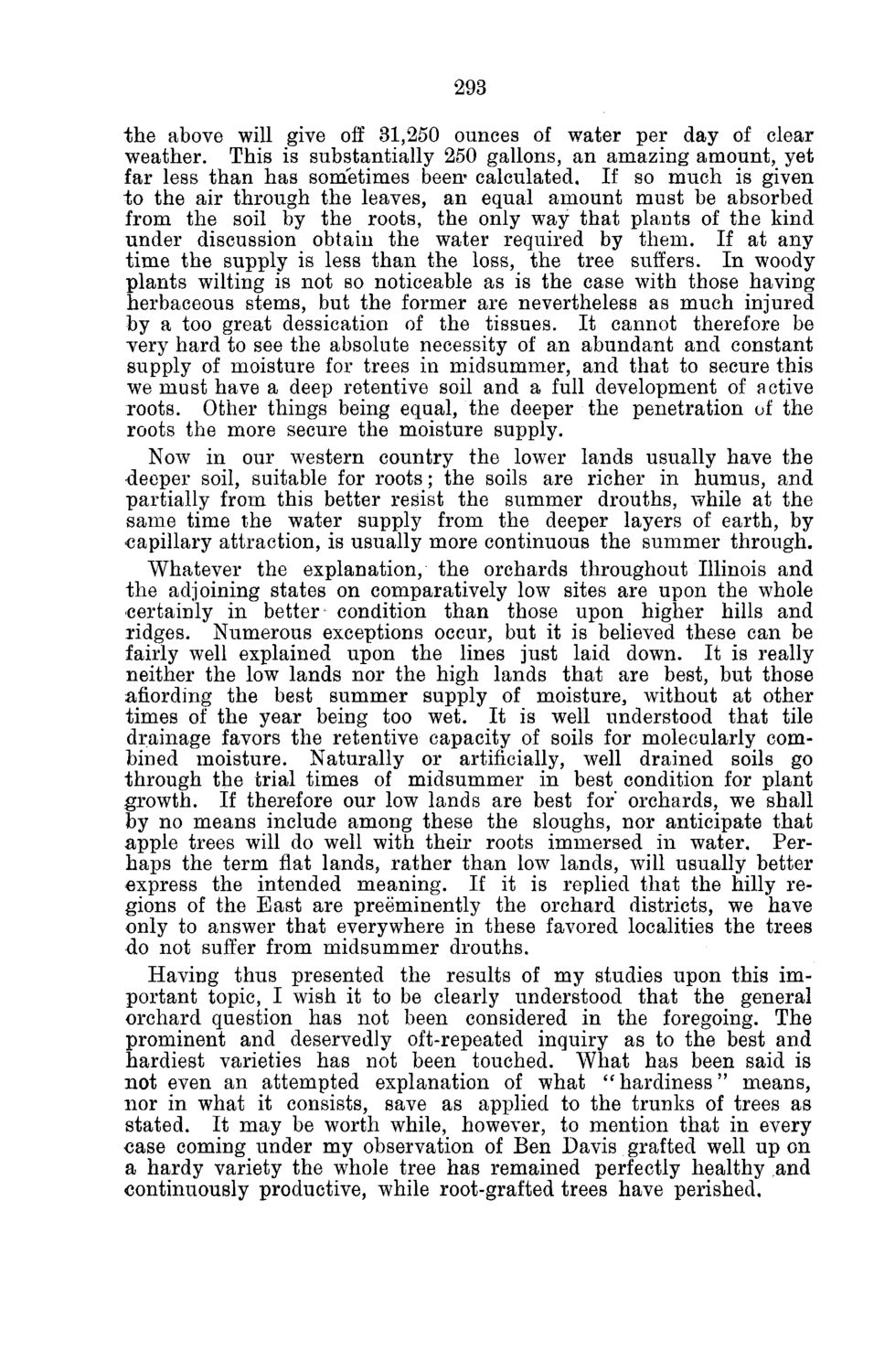| |
| |
Caption: Board of Trustees Minutes - 1886
This is a reduced-resolution page image for fast online browsing.

EXTRACTED TEXT FROM PAGE:
293 the above will give off 31,250 ounces of water per day of clear weather. This is substantially 250 gallons, an amazing amount, yet far less than has sometimes been* calculated. If so much is given to the air through the leaves, an equal amount must be absorbed from the soil by the roots, the only way that plants of the kind under discussion obtain the water required by them. If at any time the supply is less than the loss, the tree suffers. In woody plants wilting is not so noticeable as is the case with those having herbaceous stems, but the former are nevertheless as much injured by a too great dessication of the tissues. It cannot therefore be very hard to see the absolute necessity of an abundant and constant supply of moisture for trees in midsummer, and that to secure this we must have a deep retentive soil and a full development of active roots. Other things being equal, the deeper the penetration of the roots the more secure the moisture supply. Now in our western country the lower lands usually have the deeper soil, suitable for roots; the soils are richer in humus, and partially from this better resist the summer drouths, while at the same time the water supply from the deeper layers of earth, by -capillary attraction, is usually more continuous the summer through. Whatever the explanation, the orchards throughout Illinois and the adjoining states on comparatively low sites are upon the whole certainly in better condition than those upon higher hills and ridges. Numerous exceptions occur, but it is believed these can be fairly well explained upon the lines just laid down. It is really neither the low lands nor the high lands that are best, but those afiording the best summer supply of moisture, without at other times of the year being too wet. It is well understood that tile drainage favors the retentive capacity of soils for molecularly combined moisture. Naturally or artificially, well drained soils go through the trial times of midsummer in best condition for plant growth. If therefore our low lands are best for orchards, we shall by no means include among these the sloughs, nor anticipate that apple trees will do well with their roots immersed in water. Perhaps the term flat lands, rather than low lands, will usually better express the intended meaning. If it is replied that the hilly regions of the East are preeminently the orchard districts, we have only to answer that everywhere in these favored localities the trees do not suffer from midsummer drouths. Having thus presented the results of my studies upon this important topic, I wish it to be clearly understood that the general orchard question has not been considered in the foregoing. The prominent and deservedly oft-repeated inquiry as to the best and hardiest varieties has not been touched. What has been said is not even an attempted explanation of what " h a r d i n e s s " means, nor in what it consists, save as applied to the trunks of trees as stated. It may be worth while, however, to mention that in every case coming under my observation of Ben Davis grafted well up on a hardy variety the whole tree has remained perfectly healthy and continuously productive, while root-grafted trees have perished.
| |